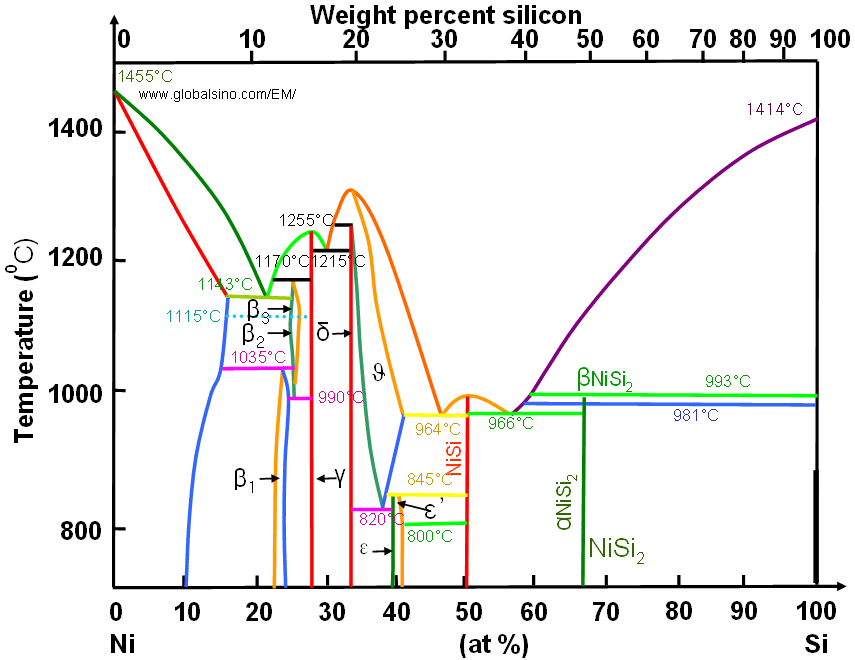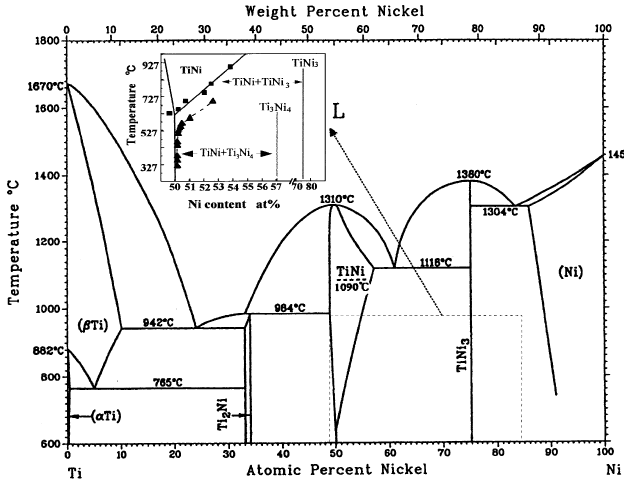=================================================================================
The phase diagram of nickel silicides is very complex and consists of various phases (some are shown in Figure 2475a). For instance, there are three polymorphic Ni3Si structures (β1, β2 and β3), Ni31Si12 (γ), NiSi3(D03, D022), Ni5Si2 (D8h), two polymorphic Ni2Si structures (δ = C23, and θ = B82), Ni2Si (C37, D03, D022), Ni3Si2 (ε), NiSi (MnP), NiSi2 (α= CaF2, β), Ni3Si2-ε', NiSi2 (CaCl2 = C35), and NiSi (L10). Even at room temperature, there are still 6 stable phases: Ni3Si, Ni31Si12 or Ni5Si2, Ni2Si, Ni3Si2, NiSi and NiSi2. [4]

Figure 2475a. Si-Ni phase diagram.

Figure 2475b. Ti-Ni phase diagram. [1-3]
[1] K. Otsuka, X. Ren, Physical metallurgy of Ti–Ni-based shape memory alloys, Progress inMaterials Science 50 (2005) 511–678.
[2] Massalski TB, Okamoto H, Subramanian PR, Kacprzak L, editors. Binary alloy phase diagrams,
2nd edition, vol. 3. Materials Park, OH: ASM International; 1990. p. 2874.
[3] Otsuka K, Kakeshita T. MRS Bulletin2002;27:91.
[4] Handbook of Binary Alloy Phase Diagrams (CD Version 1.0), ASM
International, ISBN PC-0-87170-562-1, (1996).
|